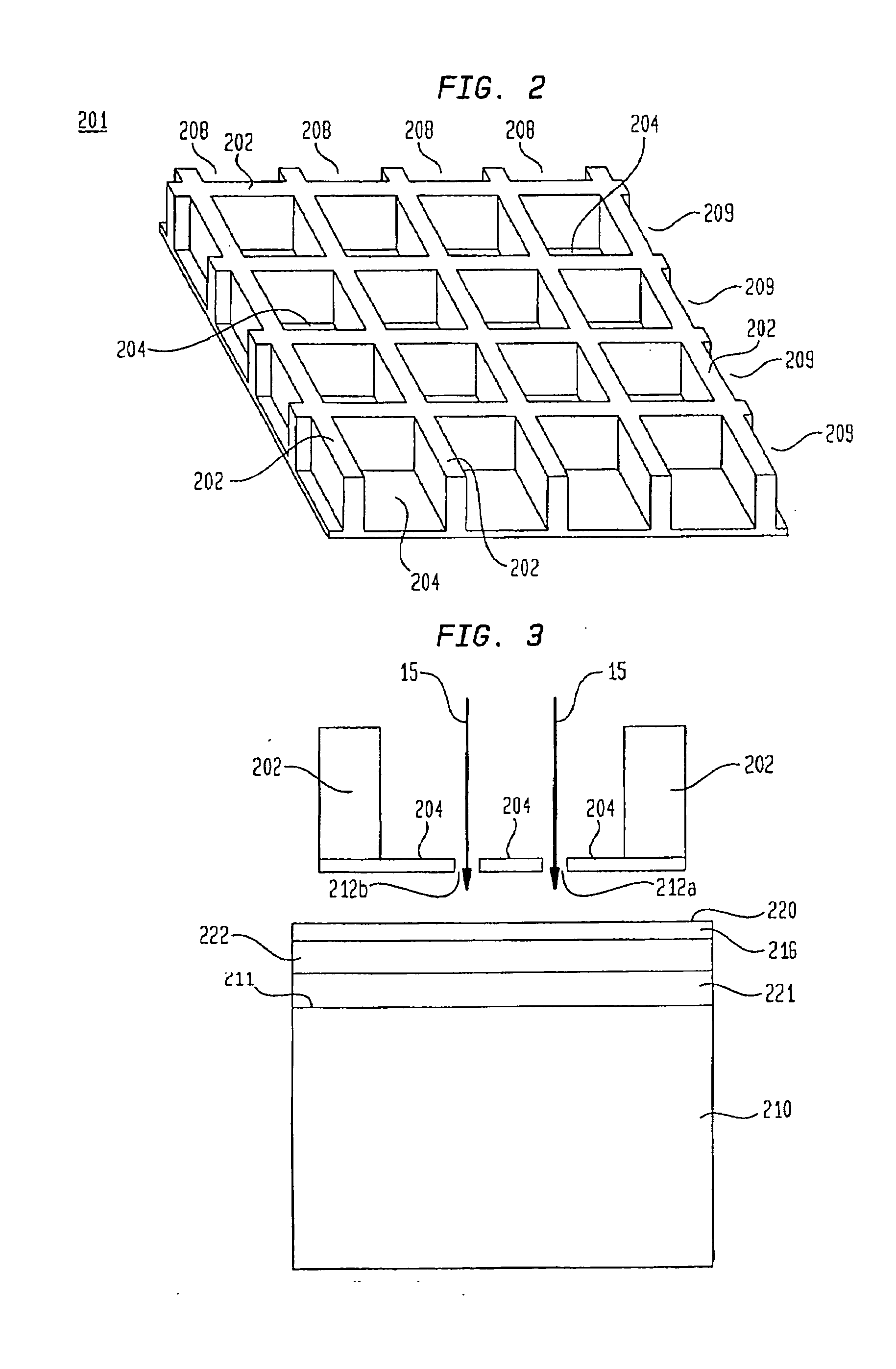Low energy electron beam lithography
a low-energy, electron beam technology, applied in the direction of printers, instruments, electric discharge tubes, etc., can solve the problems of low throughput of such use, limited use to custom circuits made in small runs and sold at very high prices, and relatively high cost of electron beam exposure systems, so as to achieve the effect of minimizing image placement errors
- Summary
- Abstract
- Description
- Claims
- Application Information
AI Technical Summary
Benefits of technology
Problems solved by technology
Method used
Image
Examples
Embodiment Construction
[0039]Referring now to FIG. 1, there is shown a system (electron beam apparatus) 10 in accordance with the present invention. System 10 comprises an electron gun 12 including an electron source 14 that provides abeam of electrons 15, a beam limiting aperture 16 which essentially forms a circular beam, and a condensing lens 18 that forms the electrons into an essentially parallel beam, a scanning projection system 20 including first and second main (primary) sets 22 and 24 of deflecting coils (or electrodes) for deflecting the beam as an essentially parallel beam in either a raster or a vector scan mode over and essentially normal to a surface of a mask structure 200 shown in block form. A preferred embodiment of the mask structure 200 is shown in more detail in FIGS. 2 and 3 and is denoted as an n Dimensional Complimentary Mask (nDCM). In a preferred embodiment n=4 and mask structure 200 is denoted as a 4DCM. The is an integer greater than 2. The drawing shows the electron beam 15 i...
PUM
 Login to View More
Login to View More Abstract
Description
Claims
Application Information
 Login to View More
Login to View More - R&D
- Intellectual Property
- Life Sciences
- Materials
- Tech Scout
- Unparalleled Data Quality
- Higher Quality Content
- 60% Fewer Hallucinations
Browse by: Latest US Patents, China's latest patents, Technical Efficacy Thesaurus, Application Domain, Technology Topic, Popular Technical Reports.
© 2025 PatSnap. All rights reserved.Legal|Privacy policy|Modern Slavery Act Transparency Statement|Sitemap|About US| Contact US: help@patsnap.com



